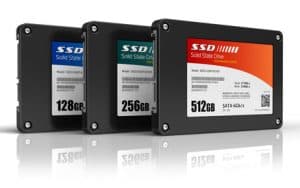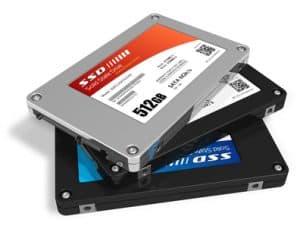SSD Drive Failure, M.2 Disk Failures, NVMe & Tips.
Indeed, solid state drives are susceptible to failure. However, it’s important to note that eProvided offers effective solid state drive recovery solutions to address these issues. Recovering data for over 20 years, eProvided will help get your files back. SSD drive failure often results from SMC (surface mount component) failures. To put it simply, SSD drives do not contain any moving parts. Our SSD drive recovery engineers excel in the retrieval of your files, photos, and videos. It’s worth mentioning that solid state drives provide rapid, energy-efficient, and dependable file storage. Nonetheless, solid state disk drives can experience failures periodically. What causes a hard drive to fail? Generally, Solid State Drives (SSD drives) function as alternatives to traditional hard disk drives. Therefore, having an understanding of common issues with SSD drives can be advantageous. In summary, this page covers SSD recommendations for users seeking rapid storage solutions. Untimely SSD drive failure can occur. Our SSD drive recovery experts specialize in recovering your essential data that may have been lost or damaged. Questions? Call eProvided 866-857-5950.
Why invest your budget in a Solid State Drive (SSD)? A standout benefit of choosing a Solid State Drive (SSD) is its impressive speed, especially when set up in an SSD RAID 5 array. At eProvided, we utilize RAID 5 disk arrays to efficiently recover lost SSD drive files. When pondering a Solid State Drive (SSD), speed and energy efficiency are indeed critical considerations. Solid state drives fail. It’s highly recommended to have a backup strategy in place to protect your data in case of unforeseen issues or disasters. eProvided SSD data recovery has a file retrieval service for those in need. We offer competitive solid state drive recovery prices. Our competitors charge more than three thousand for solid state drive failure data recovery. This is way too much for recovering data from drive failures on an SSD.
Indeed eProvided solid state data recovery pricing is always significantly lower than the competition. Cheap solid state drive recovery is crucial. eProvided stands out in the data recovery arena with a pricing strategy that doesn’t break the bank. While others charge a small fortune, we’ve opted for a more budget-friendly approach. We make solid-state data recovery accessible to everyone. So, not only do we expertly retrieve your precious files, but we also rescue your wallet from overpriced alternatives. It’s like getting a superhero for your SSD failure data at a sidekick’s price!
What causes SSD to fail? Be sure you have the correct and latest firmware. Reports of failures concerning SanDisk Extreme SSDs have stirred concerns within the community. This story came to light on May 22, 2023. This has shed light on the reliability issues with these storage devices. SanDisk has built a reputation for crafting top-notch SSDs. However, the abrupt failures have sparked queries among users regarding the durability and performance of the SanDisk Extreme drives. A firmware fix is available for some models, but not all. Did your Sandisk Extreme SSD fail? If your SanDisk Extreme SSD failed, inform us; we stand ready to extend our M.2 disk failure assistance.
Consumers want to know: [Read more: 4GBs bandwidth on SSD disks]
Recover SSD Data.
M.2 SSD technology has experienced a significant surge in 2023-2024, and the demand for it is equally substantial. Impressive speeds characterize these SSDs. They are meticulously crafted to facilitate high-performance data storage in energy-efficient devices. The M.2 form factor was brought to life by the PCI Special Interest Group, in collaboration with SATA-IO. As a result, M.2 provides support for PCI Express (PCIe), Wi-Fi, Universal Serial Bus (USB), and Serial ATA (SATA).
M.2 SSDs are at the forefront of the race! Consequently, the demand for M.2 Solid State Drives is on the rise. So, let’s delve into them and their connection to solid state data recovery. With great power comes great potential for data loss? M.2 SSDs, like any storage device, are not immune to crashes, corruption, or accidental deletions. And when disaster strikes, the stakes are even higher thanks to their irreplaceable data.

M.2 SSDs are small, fast and use less power. Solid state data recovery is fast on these new devices. Thus, using SSD drives allows for faster file recovery when SSD problems strike. Make sure to contact SSD drive recovery experts if your drive becomes unrecognized. Recover SSD data no matter what caused the issues in the first place. SSDs speak a different language: M.2 SSDs use complex controllers and interfaces that are like a foreign language to data recovery novices. But eProvided experts has the Rosetta Stone – specialized tools and techniques specifically designed to crack these codes and extract your precious information.
Solid State Drive Form Factors Brief Overview.
Key note: these are just typical specifications; actual capacities and dimensions may vary depending on the SSD manufacturer.
- PCI-Express SSDs are a premium option. These SSDs have a higher price tag. They are renowned for their lightning-fast data transfers. This form factor excels in high-performance roles, often found in top-tier desktops and servers. They come in many capacities. Many of these drives stretch up to 16TB.
- M.2: The M.2 form factor is a newer, smaller form factor that is becoming quite popular in laptops and desktops. It is available in a variety of lengths, including 2280, 2260, and 2242. SSD form factors are quite popular. M.2 SSDs, are comparable to mSATA. Likewise, they are bare-circuit mini-boards. There are both SATA and PCI-E variants. Usually 22 mm wide and 30–110 mm long. Also, extended-size M.2 drives can encompass more NAND chips. So, larger capacities than their shorter counterparts.
- NVMe (non-volatile memory express) is a host controller interface and data storage protocol. Manufactured to quicken the transfer of files on systems and SSD’s. Hence, this takes place over a PC’s lightning-speed (PCIE) bus system. NVM Express machines are part of burst buffer storage in fast supercomputers.
- A Solid State Module (SSM) resides in a Dual In-Line Memory Module (DIMM). This form factor may use a standard HDD interface such as SATA.
- 2.5 SSD—the most affordable and most familiar is the 2.5″ SSD. They’re used in desktop PC’s. Thus, they have a lightweight shell. The 2.5″ form factor is a traditional form factor that’s still widely used in desktops & servers. It is available in a variety of capacities, up to 4TB.
- mSATA SSD, also known as Mini-SATA—These Solid State Disks are much smaller than the 2.5. mSATA takes advantage of “Advanced Technology Attachment” (ATA) commands. The commands allow for the movement and transfer of data. mSATA-based SSD storage drives are smaller than a credit card.
- 3.5″: The 3.5″ form factor is a larger form factor that is typically used in desktops and servers. It is available in a variety of capacities, up to 18TB.
- U.2: The U.2 form factor is a high-performance form factor. This factor is typically used in high-end desktops and servers. It is available in a variety of capacities, up to 16TB.
Compare Solid State Drive Form Factors.
eProvided SSD Form Factor Comparison Chart of the Different SSD Form Factors.

| Factor | Dimension (mm) | Capacity (GB) |
|---|---|---|
| M.2 2280 | 22x80x3.81 | <= 2TB |
| M.2 2260 | 22x60x3.81 | <=1TB |
| M.2 2242 | 22x42x3.81 | <=512GB |
| 2.5″ | 69.85×100.2×7 | <=4TB |
| 3.5″ | 101.6×146.9×9.5 | <=18TB |
| U.2 | 80x22x2.38 | <=16TB |
| PCIe | 30x80x2.2 | <=16TB |
When choosing an appropriate SSD, consider the form factor, capacity, and performance requirements of your setup.
Solid State Drives come in many layouts. However, eProvided.Com SSD drive recovery services recovers data from all SSD form factors.
HDD Drives vs. SSD Drives? Exploring SSD Data Recovery and SSD Problems.
Hard drives were the traditional storage choice for desktops and laptops. In essence, HDD’s are a platter made of metal with a magnetic coating. In short, this magnetic coating stores all your files. They’re accessed by a read/write arm as the disk spins. In short, SSD problems can arise for very different reasons. SSD issues often originate from failed controllers and damaged circuits. In summary, fuses can fail or blow out, and SSD controller chips can become corrupted. Consequently, these factors contribute to the occurrence of SSD problems.

Set of solid state drives (SSD)
The multitude of surface-mount components in SSDs is often the source of SSD problems. An SSD has a series of NAND flash memory chips. For instance, NAND wafers on SSD storage connect via a controller chip. In short, the NAND wafers store your files without moving parts. When this technology becomes unrecognized or corrupted, data recovery on SSD storage drives is possible.
Read more about SSD drive failure by keeping up to date with our blog. Hence, stay tuned for more information to be updated.
Why did my Solid State Drive Fail? SSD Drive Failure. Causes to an SSD not being Recognized.
SSD drives do fail, often quite suddenly. Nevertheless, they are generally reliable. Click for SSD data recovery! There are instances that cause Solid State Drive failure.
Besides SSD failure, our engineers provide SSD drive recovery for damaged SSDs. SSDs are prone to failure, and the most common are those we will discuss below.
SSD failure occurs for a few reasons. File system issues, operating system errors, and bad blocks are just a few symptoms of SSD failure. When your machine won’t boot or the drive runs extremely slow, you could be at risk of data loss. Continuously check the health of your SSD. In order to have a successful recovery, having a healthy drive is detrimental.
Physical faults with the SSD itself, such as shoddy workmanship in the solder joints, causing connections to break or become oxidized. Faulty components in the SSD itself can lead to NAND flash memory failures in the drive, causing it to malfunction. Professional SSD drive recovery can restore not only unrecognized drives but physically damaged ones too.

SSD Drive Failure Photo
SSD Data Corruption can Cause a Drive to Fail. Thus, Leading to Loss of Data.
Solid State Drive failures are caused by factors such as bad sectors, virus damage, short circuits, and corrupt data. And SSD failure is likely in the event of faulty wiring.
Corruption of SSDs, NVMe, and PCIe drives is frequently observed, often resulting from factors like severe impacts, water damage, and short circuits. In summary, SSDs are a robust technology, but they are not immune to issues. Unexpected impacts can result in significant damage to the SSD. Moreover, liquids on these drives are dangerous. Bad solder joints and non-lead solder technology is not perfect. Besides, eProvided knows the most common failures in SSD drives. Usually, solder joints and broken connections inside the SMB are common SSD failure symptoms. In fact, our SSD drive recovery engineers have over 20 years of experience in recovering data. With this in mind, your files, photos, and videos are recoverable.
Have you seen the layers of a SSD drive board? See how complex these storage devices can be. In particular, they are comprised of many NAND wafers. How are NAND chips created? SSD drive recovery consists of NAND retrieval. Data stored to an SSD resides within these NAND chips, and if they were to crash, your files could disappear.
SSD Firmware Upgrades Fail, Causing a Drive to Stop Working.
Do SSD drives fail? Yes, they do. So, for you, what if SSD failure is now a reality? Utilizing SSD drive recovery services provides you with options to restore your lost files. The rates of solid state drive failure have witnessed improvements over the past decade. Thus, this minimizes the occurrence of “Solid State Drive problems.”. Improvements in circuits and SSD controllers are the contributing factors.
SSDs are incredibly valuable and deliver high-performance storage solutions, offering ample capacity, swift access times, silent operation, and outstanding durability. If your SSD fails, our professional SSD drive recovery services and expertise will assist in recovering your data without any loss. We understand that your data is invaluable, and our goal is to minimize any potential loss during the recovery process. Of course, it’s always wise to keep backups, just in case.
The Importance of Regular Backups. Our solid state drive recovery services are designed to recover from SSD failures. It’s always wise to have backups in place. This redundancy is essential for safeguarding your SSD data and protecting yourself from unexpected data loss or SSD controller failure.
Have a solution for SSD drive failure. Contact eProvided Toll-Free 1-866-857-5950

